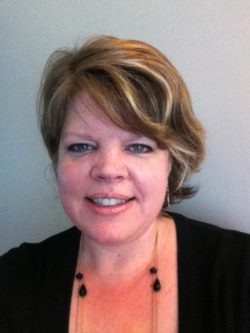FOCUS
Shifting mindsets about educating young children
By Tara-Lynn Scheffel and Lotje Hives
Categories: Career pathways, Early education, Learning designsApril 2021
Read the remaining content with membership access. Join or log in below to continue.
Sed ut perspiciatis unde omnis iste natus error sit voluptatem accusantium doloremque laudantium, totam rem aperiam, eaque ipsa quae ab illo inventore veritatis et quasi architecto beatae vitae dicta sunt explicabo. Nemo enim ipsam voluptatem quia voluptas sit aspernatur aut odit aut fugit, sed quia consequuntur magni dolores eos qui ratione voluptatem sequi nesciunt. Neque porro quisquam est, qui dolorem ipsum quia dolor sit amet, consectetur, adipisci velit, sed quia non numquam eius modi tempora incidunt ut labore et dolore magnam aliquam quaerat voluptatem.
References
Avery, J., Callaghan, K., & Wien, C.A. (2016). Documenting children’s meaning: Engaging in design and creativity with children and families. Davis Publications.
Callaghan, K. (2013). The environment is a teacher. In Think, feel, act: Lessons from research about young children (pp. 27-30). Ontario Ministry of Education.
Campbell, T., Brownlee, A., & Renton, C.A. (2016). Pedagogical documentation: Opening windows onto learning. What works? Research into practice. Research Monograph #61. www.edu.gov.on.ca/eng/literacynumeracy/inspire/research/ww_pedagogicdoc.pdf
Dewhurst, A. (2016). How to say “yes” to children’s ideas. Journal of Childhood Studies, 41(2), 55-59.
Edwards, C., Gandini, L., & Forman, G. (Eds.). (2011). The hundred languages of children: The Reggio Emilia experience in transformation. ABC-CLIO.
Fraser, S. (2012). Authentic childhood: Experiencing Reggio Emilia in the classroom. Nelson.
Heard, G. & McDonough, J. (2009). A place for wonder. Stenhouse Publishers.
Iannacci, L. & Whitty, P. (2009). Introduction to reconceptualist perspectives. In L. Iannacci & P. Whitty (Eds.), Early childhood curricula: Reconceptualist perspectives (pp. 7-31). Detselig.
Krechevsky, M., Mardell, B., Rivard, M., & Wilson, D. (2013). Visible learners: Promoting Reggio-Inspired approaches in all schools. Jossey-Bass.
Malaguzzi, L. (1994). Your image of the child: Where teaching begins. Exchange, 3, 52-56.
Ontario Ministry of Education. (2016). The kindergarten program. Queen’s Printer for Ontario.
Rinaldi, C. (2003). The teacher as researcher. Innovations in early education: The International Reggio Exchange, 10(2), 1-4.
Samuelsson, I.P., Sheridan, S., & Williams, P. (2005). Five preschool curricula —comparative perspective. International Journal of Early Childhood, 38(1), 11-30.
Wien, C.A. (2004). From policing to participation: Overturning the rules and creating amiable classrooms. Young Children, 59(1), 34-40.
Wien, C.A. (2013). Making learning visible through pedagogical documentation. In Think, feel, act: Lessons from research about young children (pp. 27-30). Ontario Ministry of Education.

Tara-Lynn Scheffel (taralyns@nipissingu.ca) is associate professor in the Schulich School of Education, Nipissing University, Ontario, Canada.

Lotje Hives (lotjeh@nipissingu.ca) is part-time instructor in the Schulich School of Education, Nipissing University, Ontario, Canada.
Categories: Career pathways, Early education, Learning designs
Recent Issues
CURRICULUM-BASED PROFESSIONAL LEARNING
October 2024
High-quality curriculum requires skilled educators to put it into...
LEARNING TO PIVOT
August 2024
Sometimes new information and situations call for major change. This issue...
GLOBAL PERSPECTIVES
June 2024
What does professional learning look like around the world? This issue...
WHERE TECHNOLOGY CAN TAKE US
April 2024
Technology is both a topic and a tool for professional learning. This...











